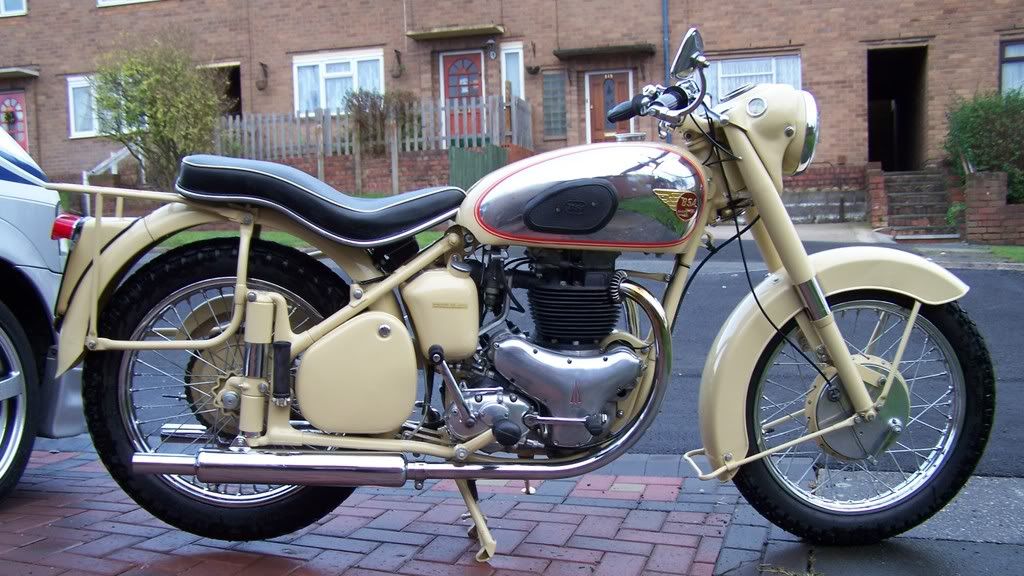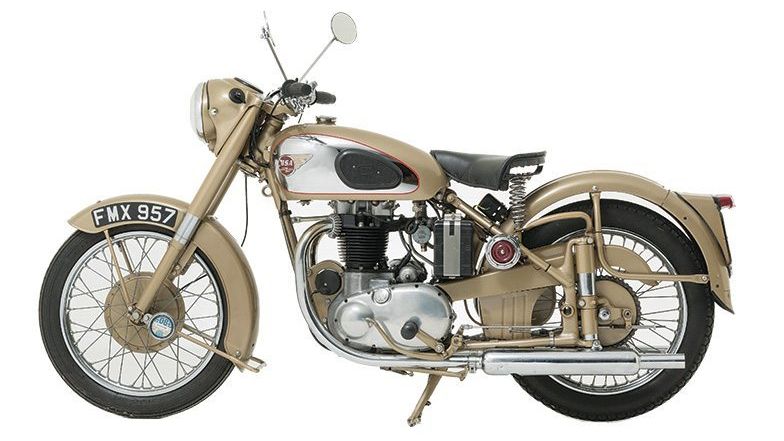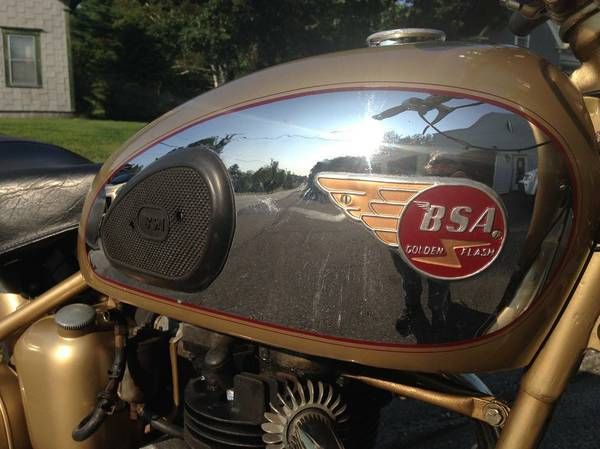The National Motor Museum in Beaulieu, Hampshire, England, received a donation worthy of the awe of any biker among us. After careful restoration, a 1953 BSA A10 "Golden Flash" was donated by its owner to the National Motor Museum to be a part of "The Motorcycle Story" exhibition. The exhibition looks at the history of motorcycling, examining and celebrating people's quest for individuality, freedom and the desire to go fast. It is the perfect venue to showcase the A10 and its post-war design that helped to shape the motorcycle industry in the mid-20th century.
Continue reading for more on the BSA A10 "Golden Flash."
BSA A10 'Golden Flash'
In 1949, Bert Hopwood, a motorcycle designer who'd designed bikes for brands such as Triumph and Norton (where he produced the Dominator 500 cc twin) was tasked with fixing the problems with the 500 cc A7 twin from Birmingham Small Arms Cycle Ltd. Hopwood, along with David Munro (one of the A7 designers) reworked the A7 into the much better 650 cc A10. Available only in black in the U.K., the A10 took on the nickname "Golden Flash" from the Polychromatic Golden Beige colorway offered in the U.S. market, which was a just fancy sales-brochure name for 'gold'.
Manufacturing the A10 at their Small Heath factory in Birmingham, West Midlands, BSA produced what was at the time, one of the most advanced high-performance motorcycles of the day, capable of speeds reaching 100 mph. Go head and laugh if you must, but for the time, that was notable feat. The A10 was clocked at 100 mph in 1950 and burned a quarter mile in 16 seconds. Not bad for a bike not meant to be a sportbike. The A10 managed 35 hp @4,500 rpm, had a four-speed gearbox, and carried 3.5 gallons of fuel giving it about a 160-mile range.
The A10 "Golden Flash" engine had an overhead-valve and vertical twin-cylinders, with the valve gear operated from a single camshaft, which was an improvement over the old side-valve engines. Weighing in at 448 pounds, the A10 had a rigid rear end as an alternative, but all models built for export sported a plunger-style rear suspension. The 1953 A10 was the last model-year to feature that plunger rear, as concerns over handling prompted a switch to a conventional swingarm in 1954.
Why Does It Matter?
It's a piece of our motorcycling history, preserved in pristine condition and harkening to a time when humans were falling over each other in their efforts to go faster on ever more complicated contraptions. BSA was, in its heyday, the largest manufacturer of motorcycles in the world. Among the brands in the BSA mega-empire, they owned Triumph and Ariel, to name but a couple.
By 1970, the once industrial giant was out of money and irrelevant as a motorcycle company. Thank goodness Triumph managed to slide out from under the rubble and survive. So failed mega-empires aside, we celebrate the times and the efforts made by the people in those early days of metal and speed and the continuing efforts to go faster.
Specifications
|
Engine: |
646 cc |
|
Power: |
35 hp @4,500rpm |
|
Gearbox: |
4 speed |
|
Electrics: |
6V |
|
Starting System: |
Kick starter |
|
Wheels: |
19 inches |
|
Front Brake: |
203 mm drum |
|
Rear Brake: |
178 mm drum |
|
Seat Height: |
30 inches |
|
Dry Weight: |
448 pounds |
|
Fuel Capacity: |
3.5 gallons |
|
Top Speed: |
100 mph |
|
Economy: |
55 mpg |
|
Range: |
160 miles |



